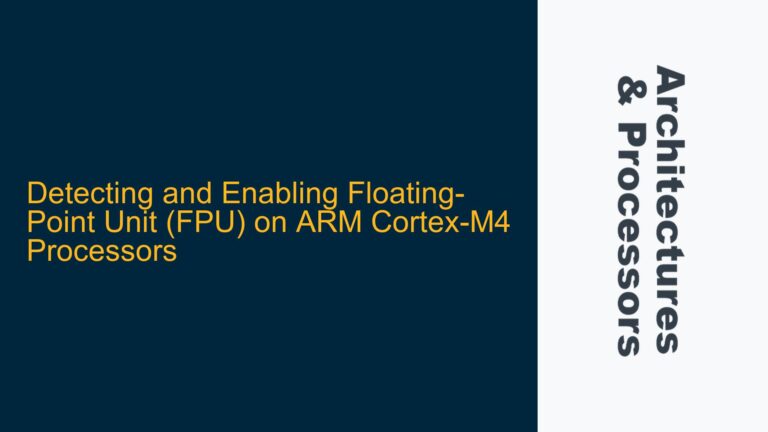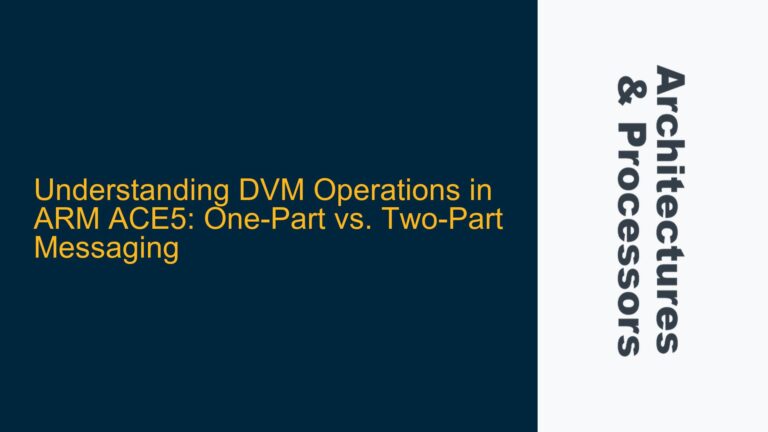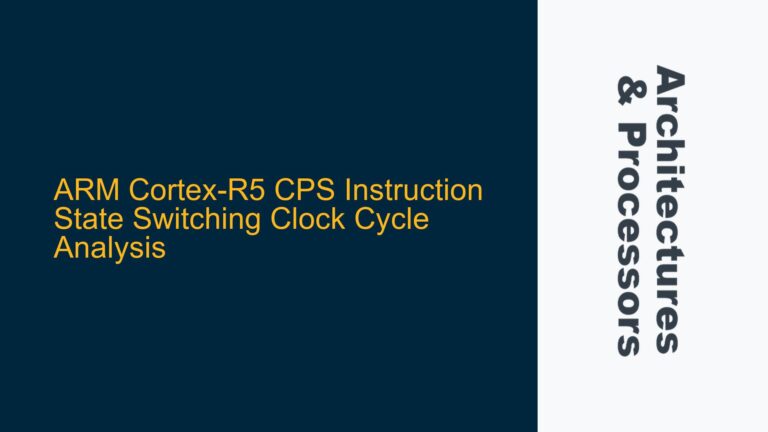ARM Cortex-A, Cortex-R, and Cortex-M Profiles: Architectural Overview and Design Philosophies
The ARM architecture is divided into several profiles, each tailored for specific use cases and performance requirements. The Cortex-A, Cortex-R, and Cortex-M profiles represent distinct families of processors designed to address different segments of the embedded systems market. Understanding the architectural differences and design philosophies behind these profiles is crucial for selecting the right processor for a given application.
The Cortex-A profile is designed for high-performance applications, typically found in smartphones, tablets, and other consumer electronics. These processors are optimized for running complex operating systems like Linux, Android, and Windows, and they feature advanced capabilities such as virtualization, multiprocessing, and high-speed memory interfaces. The Cortex-A processors are part of the A-Profile, which emphasizes performance and feature-richness, making them suitable for applications that require significant computational power and multitasking capabilities.
In contrast, the Cortex-R profile is tailored for real-time applications where determinism and reliability are paramount. These processors are commonly used in automotive systems, industrial control, and safety-critical applications. The Cortex-R processors are part of the R-Profile, which focuses on real-time performance, low-latency response, and fault tolerance. They often include features like dual-core lockstep for error detection and correction, as well as enhanced interrupt handling to ensure timely response to external events.
The Cortex-M profile, on the other hand, is designed for microcontroller applications that require low power consumption and cost-effectiveness. These processors are widely used in IoT devices, wearables, and other embedded systems where energy efficiency and small form factors are critical. The Cortex-M processors are part of the M-Profile, which emphasizes simplicity, low power consumption, and ease of use. They typically feature a reduced instruction set, lower clock speeds, and integrated peripherals to minimize system complexity and power usage.
The architectural differences between these profiles are rooted in their intended use cases. Cortex-A processors are built for high performance and feature-rich environments, Cortex-R processors are optimized for real-time and safety-critical applications, and Cortex-M processors are designed for low-power, cost-sensitive applications. These design philosophies influence everything from the instruction set architecture (ISA) to the memory hierarchy and peripheral integration.
Key Differences in Instruction Set Architecture, Memory Hierarchy, and Peripheral Integration
The instruction set architecture (ISA) is one of the most significant differences between the Cortex-A, Cortex-R, and Cortex-M profiles. Cortex-A processors typically implement the ARMv7-A or ARMv8-A architecture, which includes support for advanced features like virtualization, 64-bit processing, and SIMD (Single Instruction, Multiple Data) instructions for parallel processing. These features enable Cortex-A processors to handle complex workloads and run sophisticated operating systems.
Cortex-R processors, on the other hand, implement the ARMv7-R or ARMv8-R architecture, which is optimized for real-time performance. The instruction set includes features like hardware divide, fast interrupt handling, and support for dual-core lockstep for error detection. These features ensure that Cortex-R processors can respond to external events with minimal latency and maintain high reliability in safety-critical applications.
Cortex-M processors implement the ARMv6-M, ARMv7-M, or ARMv8-M architecture, which is designed for simplicity and low power consumption. The instruction set is streamlined to reduce complexity and power usage, with features like Thumb-2 technology for efficient code density and low-latency interrupt handling. Cortex-M processors also include integrated peripherals like timers, ADCs, and communication interfaces to minimize external component count and system complexity.
The memory hierarchy is another area where the profiles differ significantly. Cortex-A processors typically feature a complex memory hierarchy with multiple levels of cache, support for virtual memory, and high-speed memory interfaces like DDR3 or DDR4. This allows them to handle large datasets and run memory-intensive applications efficiently.
Cortex-R processors have a simpler memory hierarchy, often with a single level of cache and support for tightly coupled memory (TCM) for low-latency access to critical data. This design ensures that Cortex-R processors can respond to real-time events with minimal delay and maintain deterministic performance.
Cortex-M processors have the simplest memory hierarchy, often with no cache and limited on-chip memory. They rely on low-power memory technologies like SRAM and Flash to minimize power consumption and cost. The memory architecture is designed to support small, efficient code bases and low-latency access to peripherals.
Peripheral integration is another key difference between the profiles. Cortex-A processors typically have fewer integrated peripherals, as they are designed to be used in systems with external chipsets and high-speed interfaces. Cortex-R processors often include peripherals like CAN controllers, Ethernet MACs, and high-speed timers to support real-time applications. Cortex-M processors have the highest level of peripheral integration, with a wide range of on-chip peripherals to minimize external component count and system complexity.
Selecting the Right ARM Processor Profile for Your Application: Performance, Power, and Real-Time Considerations
Selecting the right ARM processor profile for a given application requires careful consideration of performance, power, and real-time requirements. Cortex-A processors are the best choice for applications that require high computational power, multitasking capabilities, and support for complex operating systems. They are ideal for consumer electronics, networking equipment, and other performance-driven applications.
Cortex-R processors are the best choice for real-time and safety-critical applications where determinism, reliability, and low-latency response are critical. They are commonly used in automotive systems, industrial control, and medical devices. The dual-core lockstep feature and enhanced interrupt handling make Cortex-R processors well-suited for applications where fault tolerance and timely response to external events are essential.
Cortex-M processors are the best choice for low-power, cost-sensitive applications where energy efficiency and small form factors are critical. They are widely used in IoT devices, wearables, and other embedded systems. The low power consumption, integrated peripherals, and ease of use make Cortex-M processors ideal for applications where minimizing system complexity and power usage is a priority.
When selecting an ARM processor, it is important to consider not only the performance and power requirements but also the development ecosystem and toolchain support. Cortex-A processors have a rich ecosystem of development tools, operating systems, and software libraries, making them suitable for complex software development. Cortex-R processors have a more specialized ecosystem focused on real-time operating systems (RTOS) and safety-critical software development. Cortex-M processors have a broad ecosystem of development tools and libraries, with a strong focus on low-power and cost-effective solutions.
In conclusion, the Cortex-A, Cortex-R, and Cortex-M profiles represent distinct families of ARM processors designed for different segments of the embedded systems market. Understanding the architectural differences, design philosophies, and key features of each profile is essential for selecting the right processor for a given application. By carefully considering performance, power, and real-time requirements, developers can choose the ARM processor profile that best meets their needs and ensures the success of their embedded system design.






